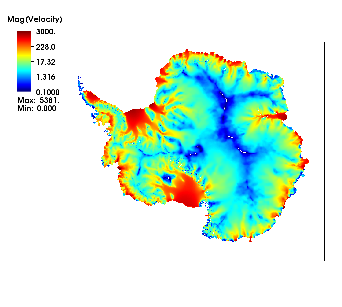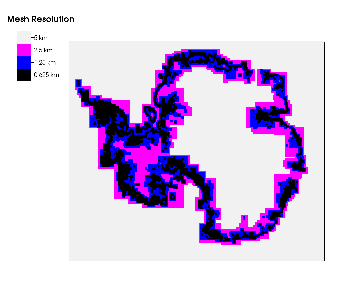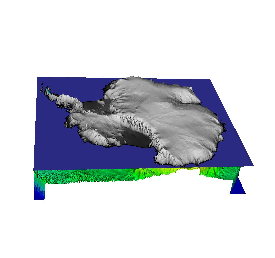Background
Understanding the dynamics of large ice sheets (like Greenland and Antarctica) is crucial to projections of future sea level rise. The dynamics of ice sheets span a wide range of scales. There are localized regions (like grounding lines and ice streams) where very fine spatial resolution (better than 1 km) is needed to accurately resolve the dynamics. At the same time, there are large regions (much of the interior of Antarctica, for example) where such fine resolution is unnecessary and represents a waste of computational resources. This makes it a prime candidate for adaptive mesh refinement.
Approach
The goal of the BISICLES project is to build a parallel, adaptive, high-performance ice sheet model built on Chombo. Ice is a shear-thinning non-Newtonian fluid, and is well-described by the Stokes equations. However, using the full Stokes equations is too computationally expensive, so we are using the vertically-integrated model of Schoof and Hindmarsh (2010).
Gallery

|

|

|
|
AMR computation of Antarctic Ice velocity magnitude.
|
Plot showing spatial resolution in the Antarcica AMR computation. White is 5km, purple is 2.5 km, blue is 1.25 km, and black is 625 m.
|